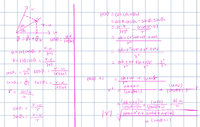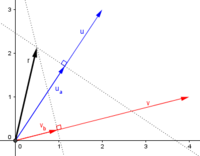I have no idea about this proof. I tried the scalar/vector projection equation to find something helpful but I dont know how to star.
Let u and v be two non-zero vectors in R2 that are not parallel to each other. Let a, b be two real numbers. Prove that there is exactly one vector r in R2
such that its scalar projection on u is a and its scalar projection on v is b.
Let u and v be two non-zero vectors in R2 that are not parallel to each other. Let a, b be two real numbers. Prove that there is exactly one vector r in R2
such that its scalar projection on u is a and its scalar projection on v is b.


